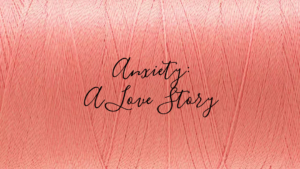By: Sarah Surrey, LCSW
What if I told you that it was anxiety that’s kept most of the human species alive this long? You know the feeling. It keeps you up at night, and leaves you jittery in the day. You’re ultra aware of the world around you.Googling every concern and worry has become a time-consuming hobby. The chemistry behind that feeling is why humankind has made it this long, and it’s normal.
In the animal kingdom, our survival skills aren’t especially impressive. We aren’t exceptionally strong, or fast. We aren’t able to hold large amounts of food in our system in order to avoid interacting with the dangers of the outside world. We don’t even have fur that helps us handle the basic challenges of the weather. What we do have is a brain that projects into the future, and predicts possible outcomes. By passing along a generational fear of the dark, we’ve avoided late night run-ins with a range of dangerous scenarios from tigers to muggers. We know not to wander off a cliff because our bodies spike our stress chemistry as far back as three feet from the ledge.
By age 25, most of us have a fully developed pre-frontal cortex that helps us evaluate circumstances and decide on the best option. It’s one of the only survival skills that we have. We can predict danger, based on very recent past danger. We can adapt to weather and scarcity challenges because we can remember and convey information on resources and local patterns. By predicting the worst-case scenario in the future, the human species has made it a long way. It wasn’t the especially carefree Neanderthal that survived long enough to pass on his low anxiety genes. Long live the anxious!
When a real or perceived external threat occurs, a chemical reaction called the stress cascade begins. Cortisol, adrenaline, and epinephrine increases throughout the body. The body reprioritizes its resources to create a situation in which it’s prepared to effectively ward of danger. Digestion slows. (Who needs to eat while fleeing from, say, a bear?) Blood flow moves away from fine motor skills, and towards muscles in the arms and legs so that a person is prepared to fight or run. Heart rate and blood pressure increase in order to support reprioritizing blood flow. Even the eyes dilate to take in more of the immediate world in front of us. In the process of physically engaging in fight or flight, the body begins to release de-stressing chemistry to reverse the stress cascade, and bring itself back to neutral. The battle itself becomes stress reduction, and brain chemistry can go back to neutral.
The modern world has presented only two major challenges to this balance. The first is that our world presents ever-increasing signals that our survival is being threatened. In actuality, our world is less life-and-death threatening than it’s been before. Our bodies are registering normal challenges (traffic jams, personal interactions, task saturation) as life-threatening. Also, our minds hold onto past threats (old trauma, mistakes, loss) or fixate on future threats (fear of failure, financial issues, bottomless “To Do” lists). Throughout the day, we also have the ability to interact with real and perceived threats through social media, and a consistent barrage of reminders from our phones that also trigger a small stress cascade with each little ping. It’s not that there’s an actual bear in the woods, but that our awareness extends to the perceived bear in somebody’s woods, somewhere else.
The second is that humans in the past had constant de-escalation skills built into their regular routine. In order to make it to the next day, people had to run, hunt, and gather. Humans physically engaged in the world around them through fleeing from or fighting larger animals, or foraging for enough to eat.
Even as farming practices developed, and the nomadic lifestyle faded, humans were physically engaged throughout their day in plowing fields, harvesting, and the physical labor of creating their own food from scratch. Modern conveniences have also reduced the opportunity to physically engage in the world on a daily basis, reducing the naturally built in de-stressing chemistry.
The first step towards developing a better relationship with our own anxiety is to acknowledge it for its life-affirming role. It’s a signal that is telling us something. It’s largely responsible for keeping our species alive to this point. It continues with that same goal, but is overzealous in responding to too much input. The body’s stress response isn’t broken; its simply low on resources for returning to a balanced state after responding.
After accepting anxiety as the skill that it is, we can redirect some energy towards building in stress management tools. We can thank the anxious parts of ourselves for getting us here, and teach those parts how to take a breather. We can pay attention to which activities feed our anxious side, and which feed our calmer side. Building a stress management toolbox, can include a wide range of activities in it. These tools should include crisis management skills, and regular daily maintenance activities. We can get the largest and fastest results from skills that involve physically engaging in the world around us, which naturally triggers our de-stressing biochemistry.
For more on developing stress management skills, follow us on Facebook. We offer information on coping skills, relaxation techniques, and cultivating contentment. If you notice that you’re using substances as your primary stress management tool, reach out to one of our trained staff today at 314-631-4299 and consider being evaluated for substance abuse treatment options.








